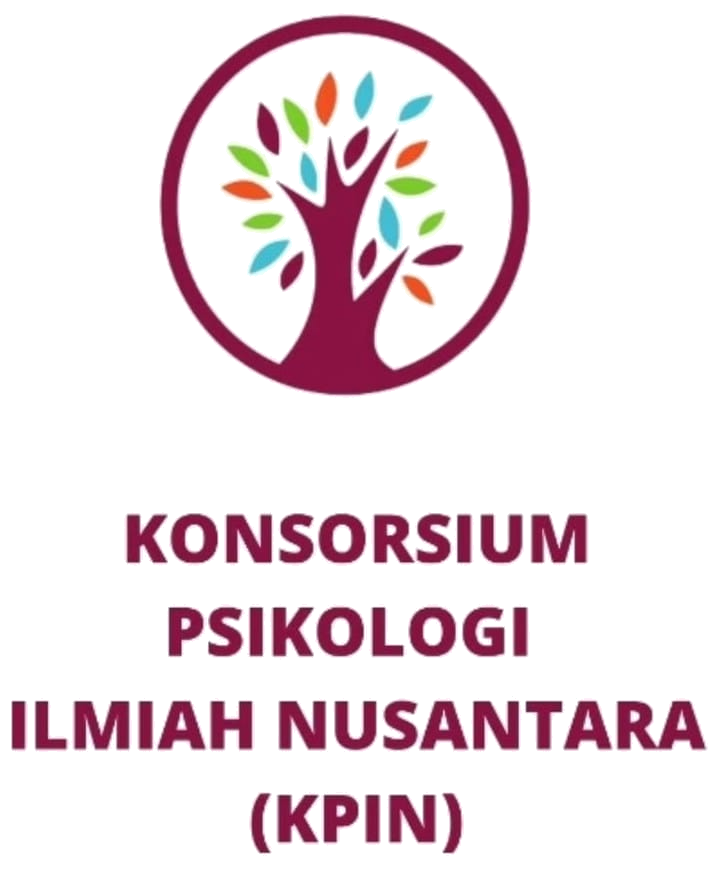Hubungan Religiusitas dengan Subjective Well-Being pada Lansia di Jakarta
DOI:
https://doi.org/10.35814/mindset.v10i02.1236Keywords:
elderly, subjective well-being, religiosityAbstract
This study aimed to look at the relationship between religiosity and subjective well-being (consisting of life satisfaction, positive emotions and negative emotions) in the elderly in Jakarta (N = 73). The measurement of religiosity in this study use an adaptation of the Religiosity Scale (Diduca & Joseph, 2007), while to measure life satisfaction, and the level of positive and negative emotions using The Satisfaction with Life Scale (Diener, Emmons, Larsen, & Griffin, 1985) and Positive Affect and Negative Affect Scale (Watson, Clark, & Tellegan, 1988). The results showed there was a relationship between life satisfaction and positive emotions with religiosity (r = 0.423, p <0.05, r = 0.234, p <0.05), but religiosity did not have a significant relationship with negative emotions (r = 0.048, p> 0.05). The results also found that as age increases, the relationship between religiosity and subjective well-being strengthens.
References
Aghababaei, N. (2013). God, the good life, and hexaco: the relations among religion, subjective well-being and personality. Mental Health, Religion & Culture 17(3), 284–290.
Bixter, M. T. (2014). Happiness, political orientation, and religiosity. Personality and Individual Differences. 72. 7 – 11.
Brown, P.H., & Tierney, B. (2009). Religion and subjective well-being among the elderly in China. The Journal of Socio-Economics. 38. 310-319.
Carstensen, L. L., Isaacowitz, D. M., & Charles, S. T. (1999). Taking time seriously: A theory of socioemotional selectivity. American Psychologist. 54. 165–181.
Diduca, D. & Joseph, S. (2007). The dimensions of religiosity scale: 20-item self-report measure of religous preoccupation, guidance, conviction, and emotional involvement. Mental Health, Religion & Culture. 10 (6). 603-608.
Diener, E., Emmons, R. A., Larsen, R. J., & Griffin, S. (1985). The Satisfaction with Life Scale. Journal of Personality Assessment, 49 (1), 71-75. DOI: https://doi.org/10.1207/s15327752jpa4901_13
Diener, E. (2000). Subjective well-being: The science of happiness and proposal for a national index. American Psychologist, 55(1), 34-43.
Diener, E., & Clifton, D. (2002). Life satisfaction and religiosity in broad probability samples. Psychological Inquiry, 13, 206-209.
Diener, E., & Ryan, K. (2009). Subjective well-being: A general overview. South African Journal of Psychology, 39(4), 391-406. DOI: http://doi.org/10.1177/008124630903900402
Diener, E., Sandvik, E., & Pavot, W. (2009). Happiness is the frequency, not the intensity, of positive versus negative affect. DOI: http://doi.org/10.1007/978-90-481-2354-4_10.
Diener, E., & Clifton, D. (2014). Life satisfaction and religiosity in broad probability samples. Psychological Inquiry. 13 (3). 206 - 209.
Ellison, C. G. (1993). Religious involvement and self-perception among Black Americans.
Heshmat, S. (2017). Explaining Delusional Thinking. Retrieve from www.psychology.com/us/blog/science-choice/201709/explaining-delusional-thinking%3famp
Hidayati, D. S. (2015). Self-compassion dan loneliness. Journal IlmiahPsikologiTerapan, 3(1), 154 – 164.
Hurlock, E. B. (2002). Psikologi Perkembangan: Suatu Pendekatan Sepanjang Rentaang Kehidupan. Surabaya: Erlangga.
Kementerian Kesehatan RI. (2017). Analisis lansia di Indonesia. Diperoleh dari www.depkes.go.id/dowload.php%3Ffile%Ddownload/pusdatin/lain-lain/
Mongisidi, R., Tumewah, R., & Kembuan, M.A.H.N. (2013). Profil penurunan fungsi kognitif pada lansia di yayasan-yayasan manula di kecamatan Kawangkoan. E-Clinic. 1(1). 1-10.
Pargament, K. I. (1999). The psychology of religion and spirituality? Yes and no. International Journal of Religion, 9(1), 3-16. DOI: doi.org/10.1207.s1532758ijpr0901_2
Sasmita, M., & Yulianti, A. (2018). Kesepian dengan kesejahteraan subjektif pada usia
lanjut yang tinggal di panti jompo khusnul khotimah pekanbaru riau. Psympathic, 3(1), 825-835.
Septianingsih, D. S., & Naimah, T. (2012). Kesepian pada lanjut usia: Studi tentang bentuk, factor pencetus dan strategi koping. Jurnal Psikologi Universitas Diponegoro, 11(2), 1 – 9. Social Forces. 71(4). 1027-1055.
Sillick, W.J., Stevens, B.A., &Catcart, S. (2016). Religiosity and happiness: comparison of the happiness levels between the religious and the nonreligious. The Journal of Happiness & Well-being. 4(1). 115-127.
Sin, N. L., & Lyubomirsky, S. (2009). Enhancing well-being and alleviating depressive symptoms with Positive Psychology Interventions: A practice friendly meta-analysis. Journal of Clinical Psychology. 65. 467–487.
Stanley, M.A., Bush, A.L., Camp, M.E., Jameson, J.P., Phillips, L.L., Barber, C.R., Zeno, D., Lomax, J.W., & Cully, J.A. (2011). Older adults’ preferences for religion/spirituality in treatment for anxiety and depression. Aging and Mental Health. 15(3). 334 – 343.
Vahia, I.V., Chattillion, E., Kavirajan, H. & Depp, C.A. (2011). Psychological protective factors across lifespan: Implications for psychiatry. Psychiatric Clinics of North America. 34. 231-248.
Veenhoven, R. (1988). The utility of happiness. Social Indicators Research, 20(4), 333-354.
Watson, D., Clark, L. A., & Tellegen, A. (1988). Development and validation of brief measures of positive and negative affect: The PANAS scales. Journal of Personality and Social Psychology, 54(6), 1063 – 1070.











